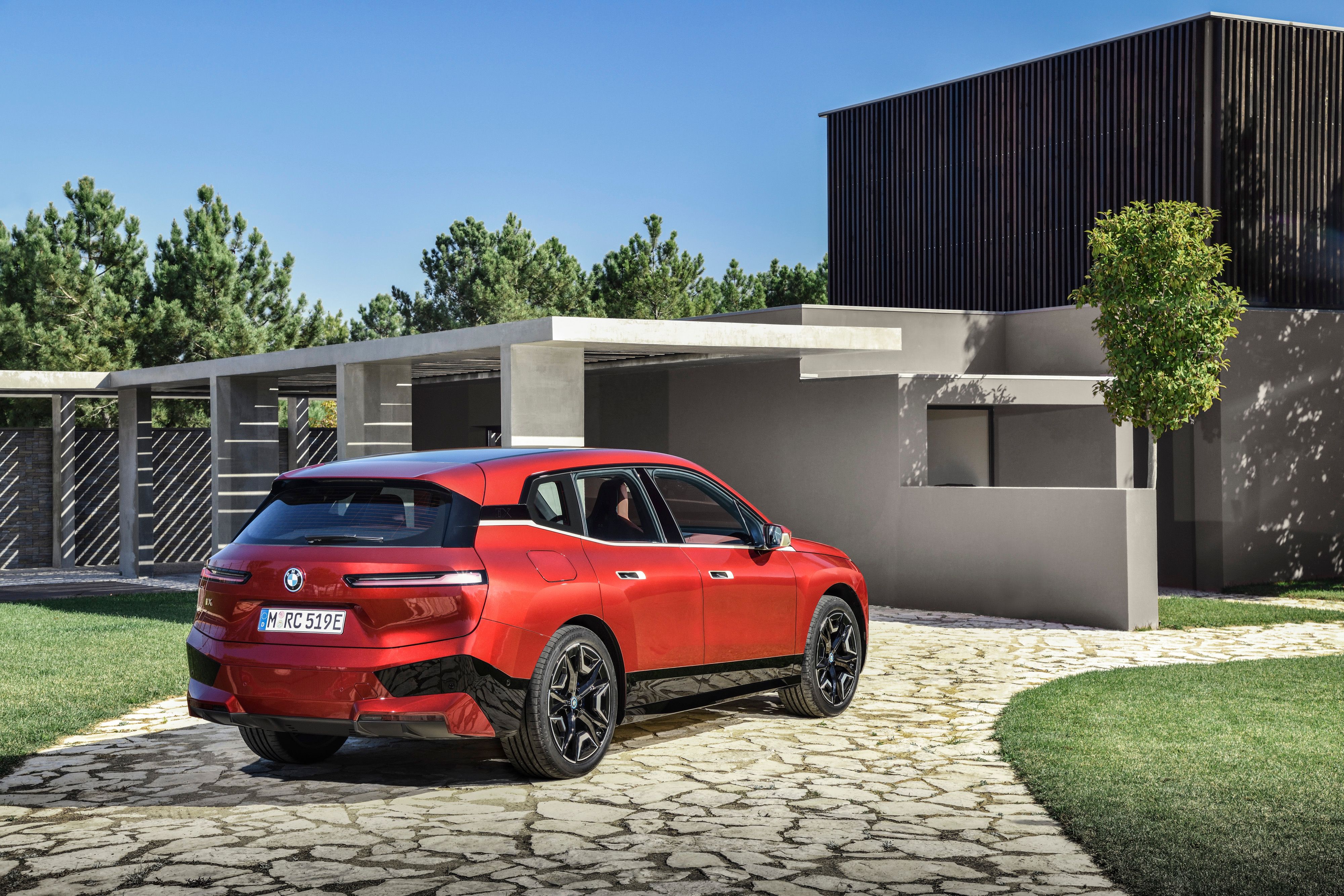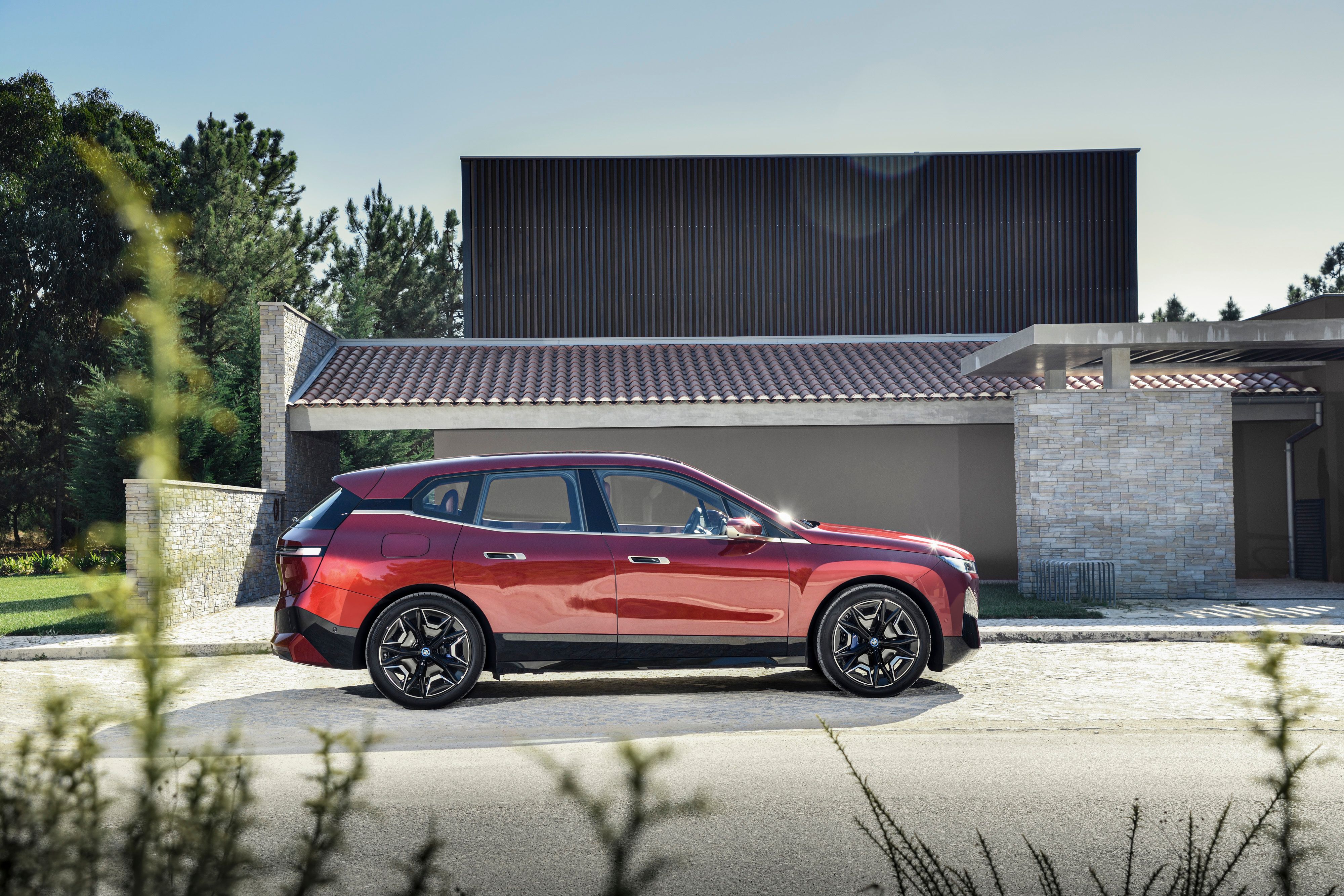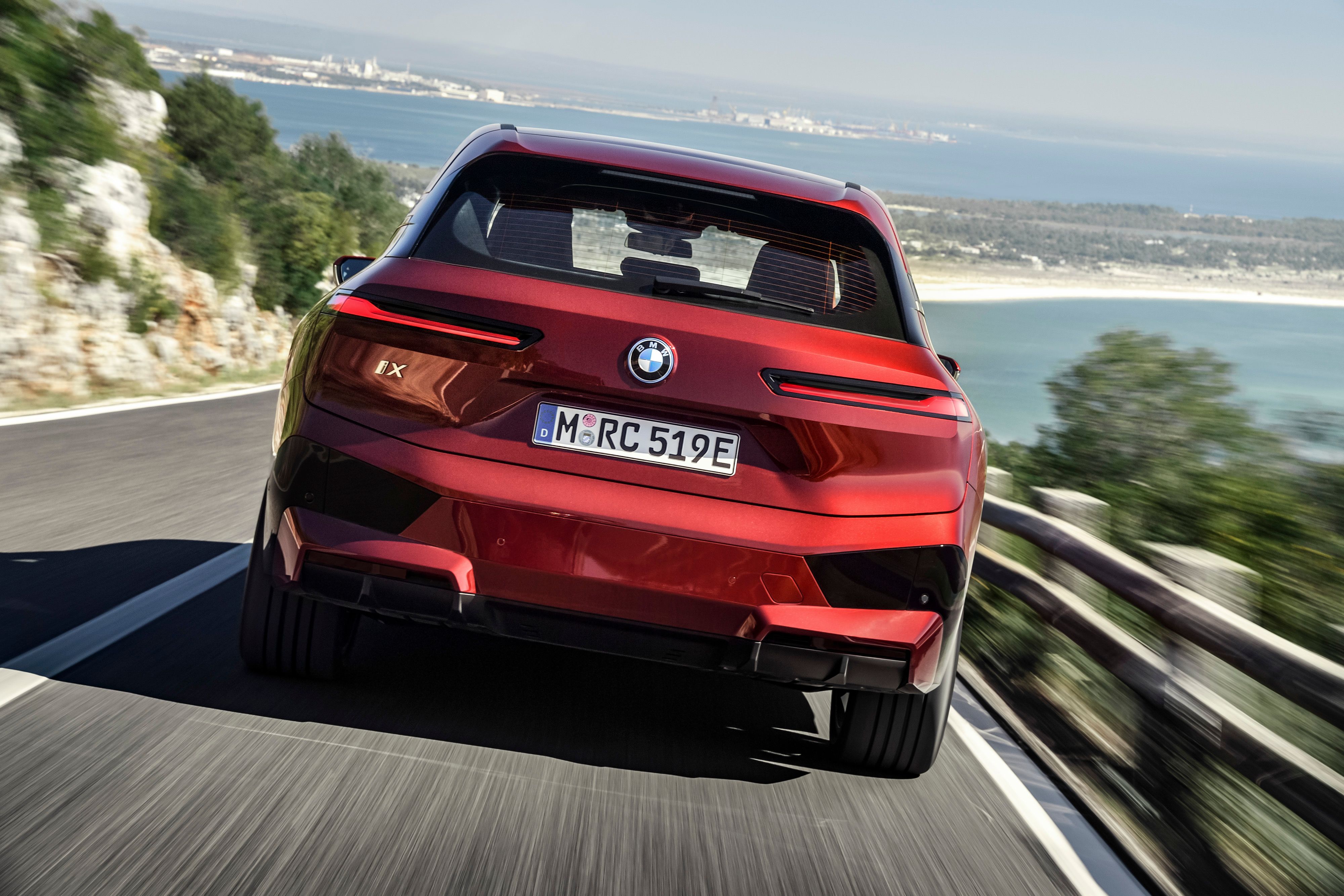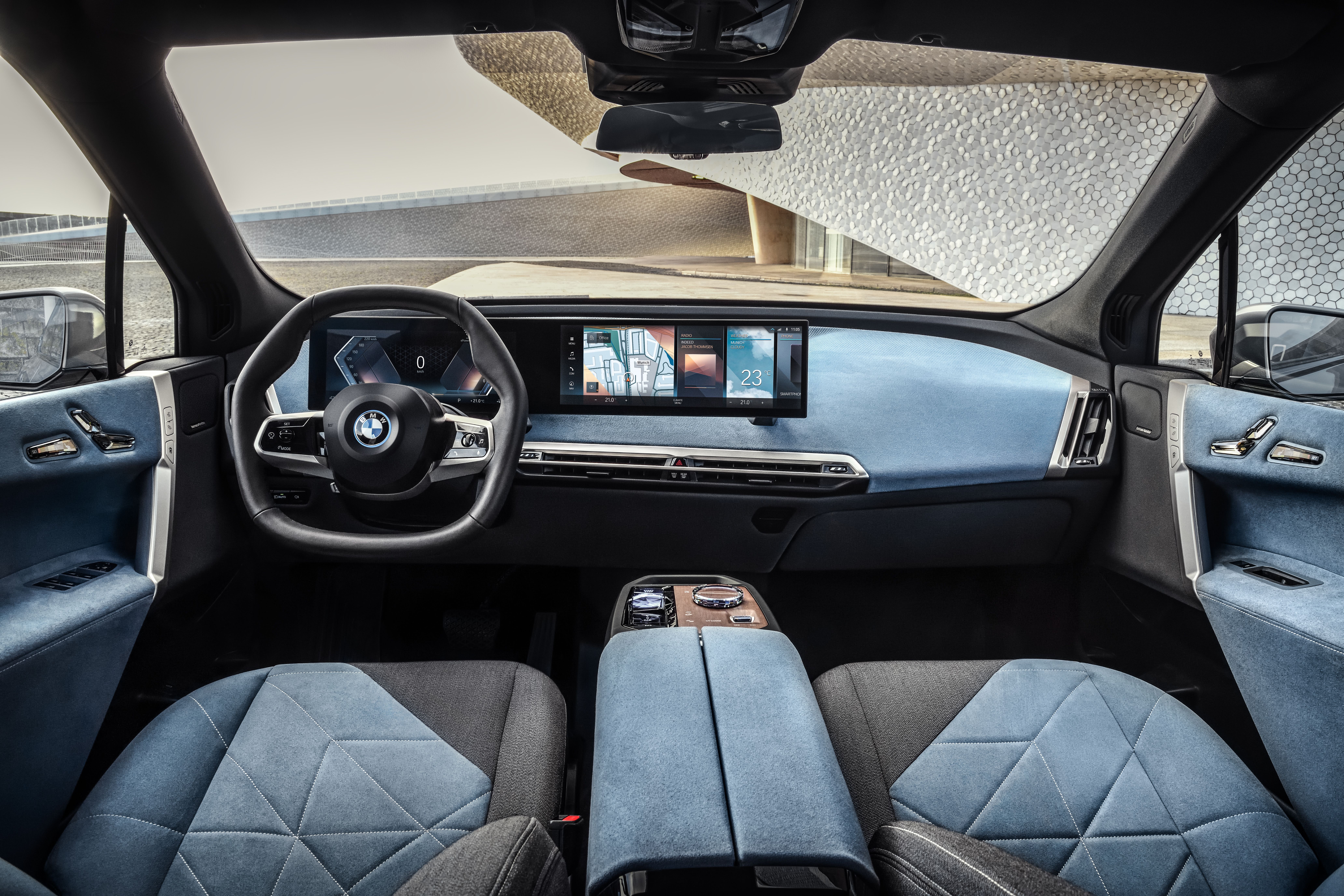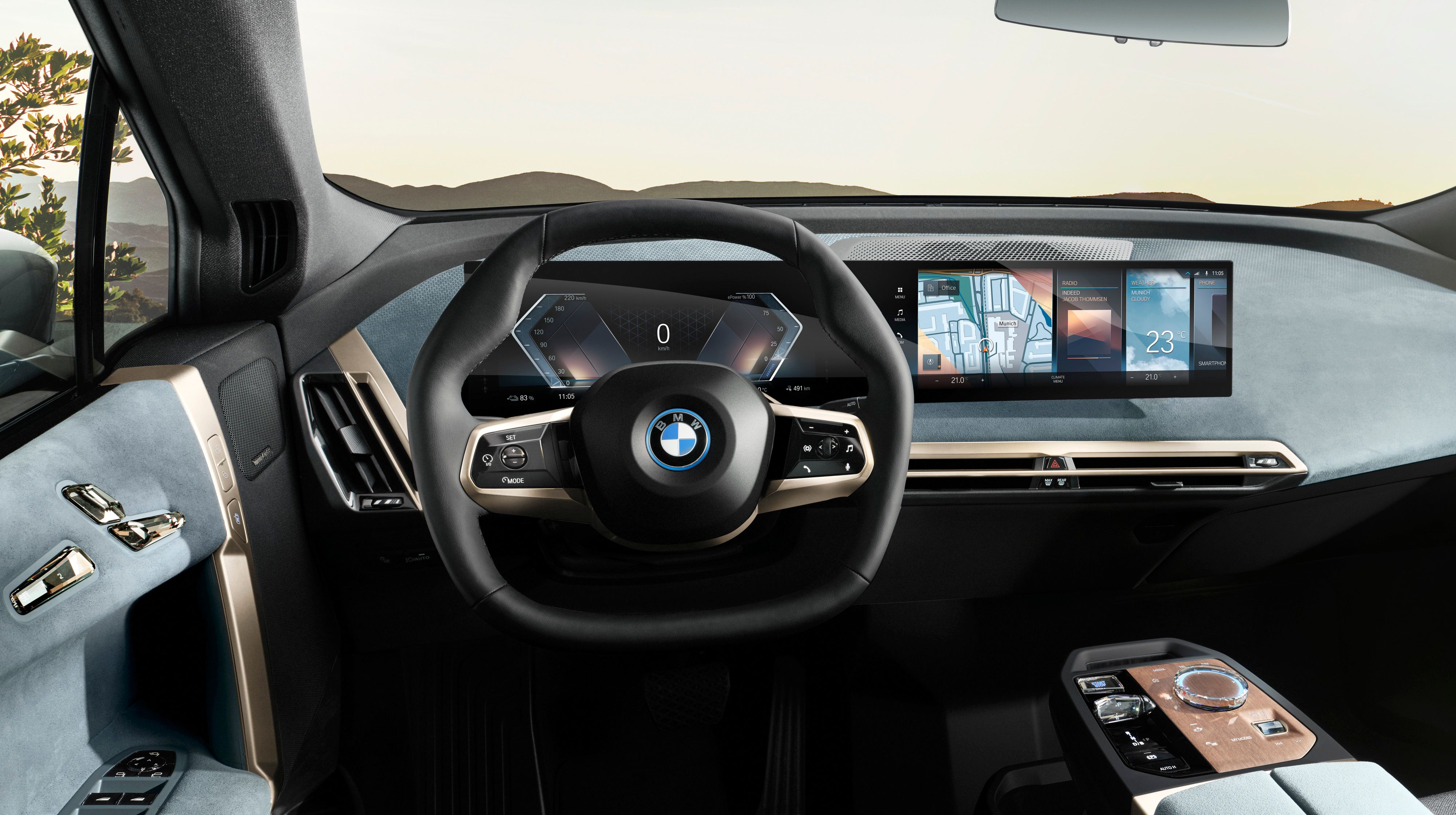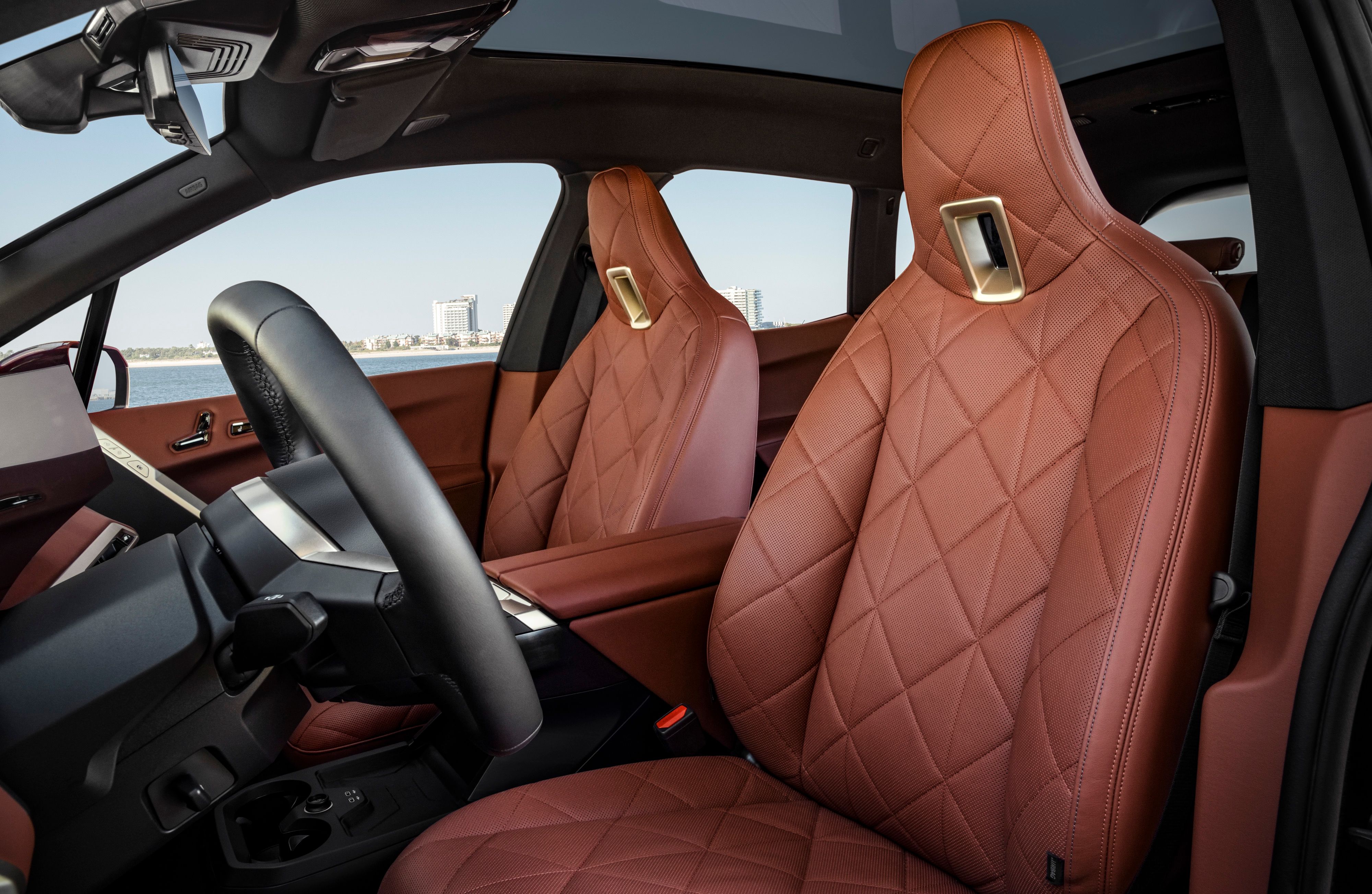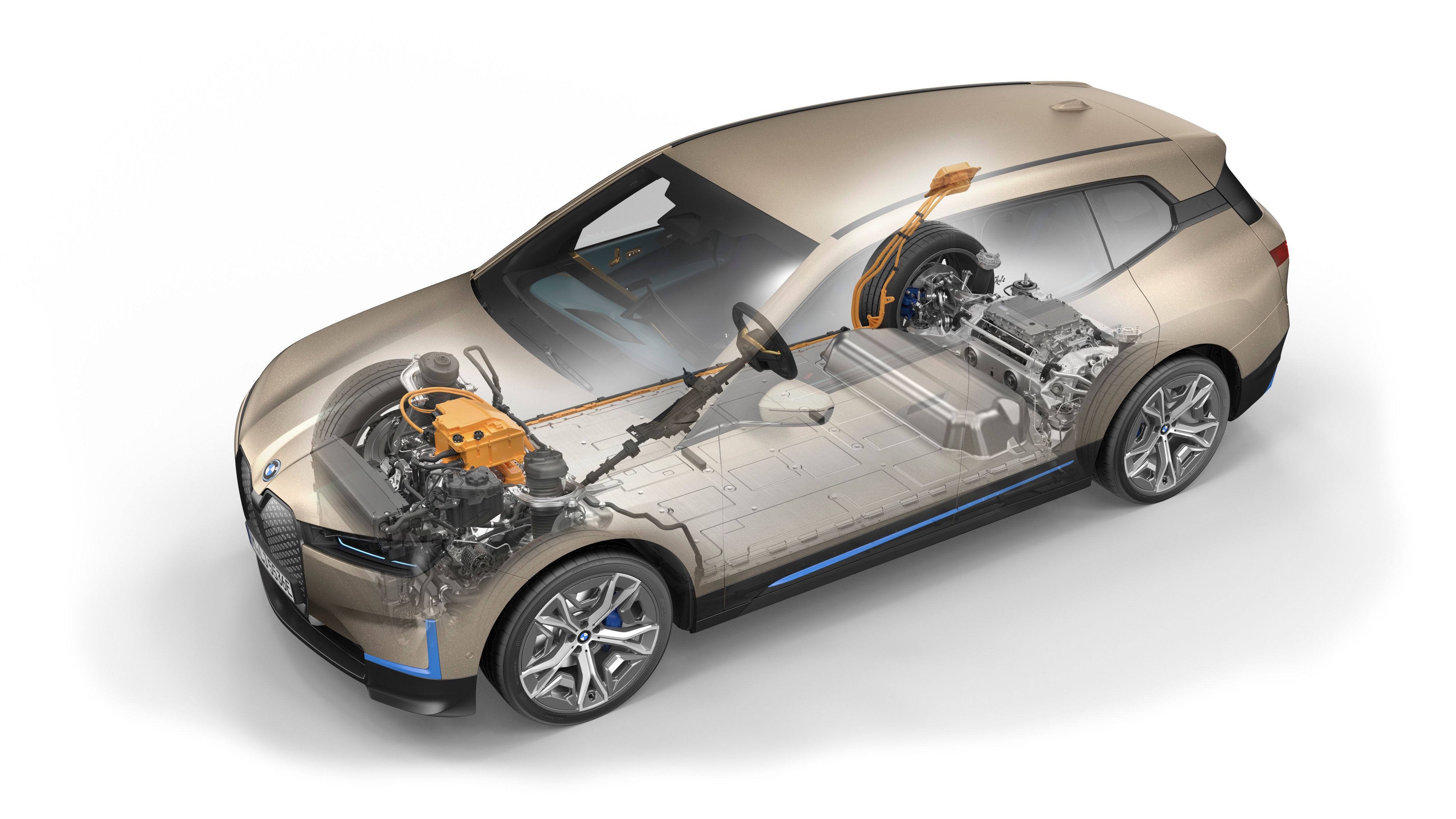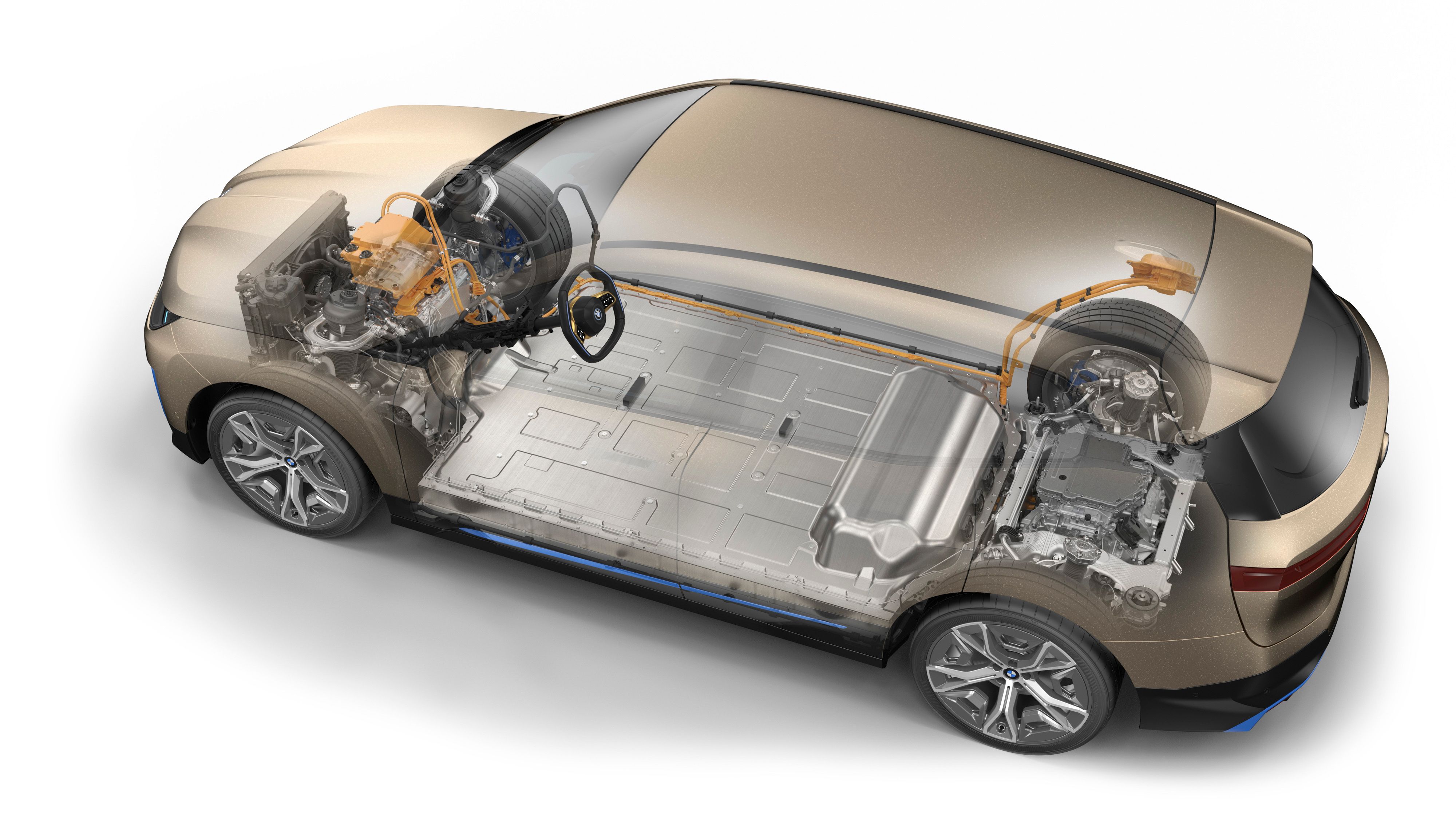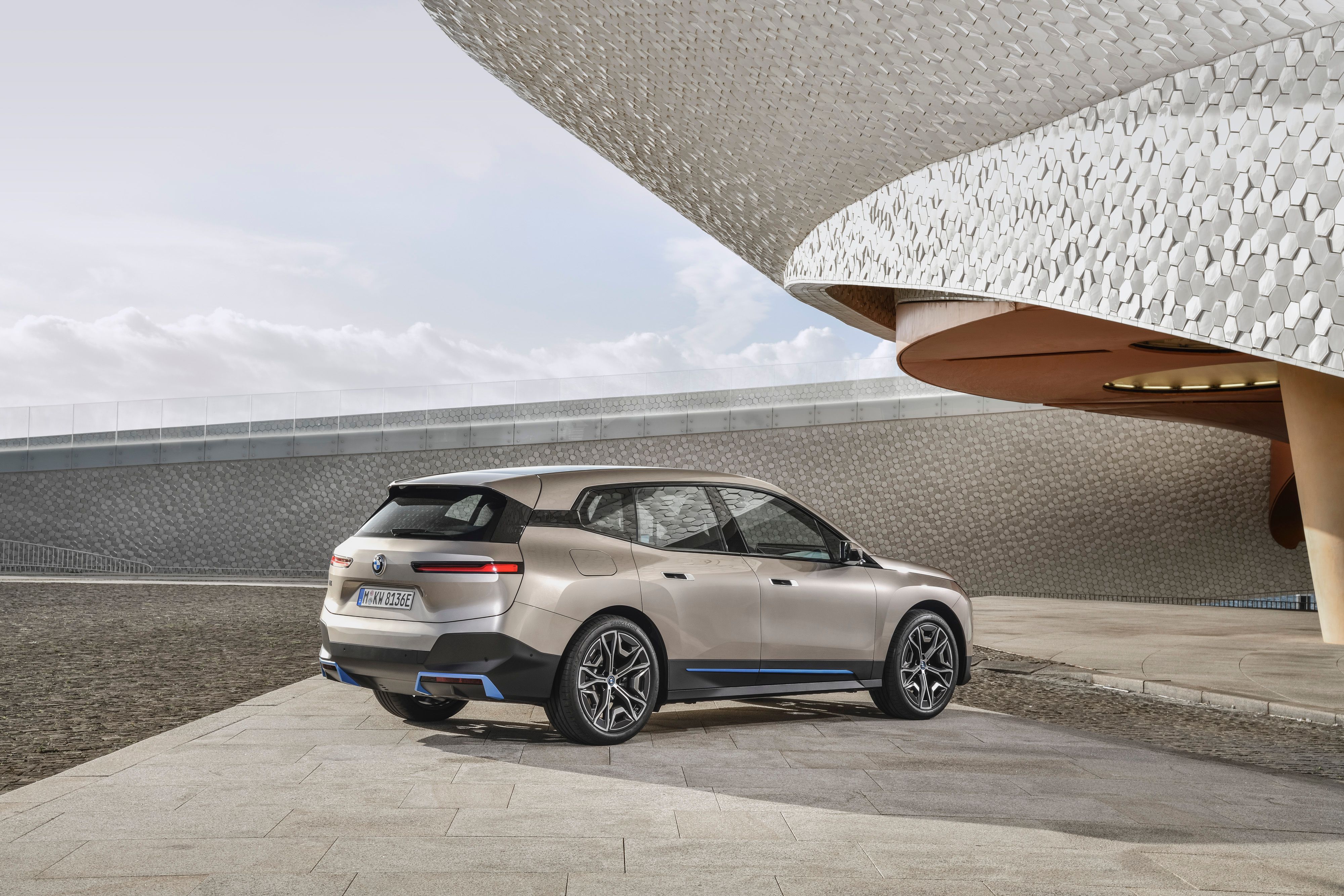Remember the Vision iNext concept that BMW unveiled at the 2018 Paris Motor Show? It's now called the iX, and it's one step closer to production. Although it's still a concept vehicle, the iX doesn't look as futuristic as the iNext, but it previous technology that we will find in BMW production models in the future. Set to go into production in late 2021, the iX will become BMW's flagship electric vehicle, so it will slot above the X3-based iX3. The big news here is that the iX is built on a new, modular, and scalable platform for electric vehicles.
The BMW iX is a sportier X5 with new design elements
|
|
ids=947045,947046 |
no_overlay=false |
before_label=BMW iX |
after_label=BMW X5> |
BMW says that the iX is comparable to the X5 in length and width, so it could actually preview the production iX5. And while it boasts some new design cues, it does remind of the company's midsize SUV.
The front fascia is dominated by a massive kidney grille that seems borrowed from the M3 and M4. The kidneys are wide and tall, stretching from the nose all the way down to the splitter. A controversial design feature on the M3 and M4, this grille seems to fit better on an SUV. The grille is also closed-off completely, as electric vehicles don't need as much cooling as combustion engine automobiles.
|
|
ids=947047,947048 |
no_overlay=false |
before_label=BMW iX |
after_label=BMW M3> |
The grille is flanked by the slimmest headlamps BMW has used so far, which leaves room for a really tall bumper with deep creases around the grille. The side vents and the lower center outlet provides cooling to the drivetrain and braking system, while the aggressive splitter is an indication of the SUV's performance.
The profile of the iX isn't particularly striking, but it's unique compared to other BMW SUVs. The wheel arches are decidedly muscular, but they also sport an almost rectangular shape, which you don't see on many production models nowadays. It also features big quarter windows, flush door handles, and frameless windows.
The rear of the iX is actually less complicated than the front fascia. The LED taillights are very slim, so it's mostly about clean surfaces in the fascia and the bumper. However, the iX sports more angular lines compared to BMW's current vehicles, so maybe it's a preview for the next-generation design language. The bumper features black areas that mimic the shape of the front vents, while the lower section incorporates exhaust pipe surrounds, even though this electric SUV doesn't have actual outlets.
The BMW iX features an impressively clean interior
BMW interiors are usually busy, even when talking about new-generation models. The iX is a notable departure from that, with an extremely clean dashboard wrapped in what appears to be Alcantara. There is a big, wide, and curved display in the center dash, but no sign of buttons and knobs everywhere. Save for the A/C vents below, there's no center stack, and most of the traditional center console is gone. The curved display previews a production feature, and BMW says it provides access to its next-generation infotainment system.
Moving over to the left, we can see a hexagonally shaped steering wheel with a flat bottom and a big instrument cluster display behind it. The iX is also fitted with a recessing head-up display projector that maintains the driver's section clean. BMW design new seats with integral head restraints for the iX, while the roof is fitted with a large panoramic glass section.
The center console between the front seats was crafted to look like a piece of furniture, while the smaller console attached to it includes the shift knob and some digital controls.
BMW says that the iX also provides the platform for "significant progress in the areas of automated driving and digital services," as "the level of computing power has been developed to process 20 times the data volume of previous models." Among others, this means that around double the amount of data from vehicle sensors can be processed than was previously possible.
The BMW iX packs 500 electrified horses
We have yet to see the iX on the go, but apparently, it's powered by BMW's fifth-generation eDrive technology. There's not a lot of information to run buy, but we do know that the twin-motor powertrain generations "more than" 500 horsepower. That's a big increase compared to BMW's only electric crossover to date, the iX3, rated at 286 horsepower. The iX needs only five seconds to hit 62 mph, also a massive improvement compared to the iX3, which takes 6.8 clicks.
BMW also unveiled that the battery system in the iX provides a range of over 600 km on the WLTP cycle and more than 300 miles on the EPA testing method. This is just a theoretical figure, but if true, it adds a solid 140 km to the iX3's range.
The iX features new charging technology that enables DC fast charging at up to 200 kW. In this setup, the battery needs less than 40 minutes to charge from 10 to 80 percent. However, a full charge on a regular wallbox takes almost 11 hours.
2020 BMW iX specifications
|
Powertrain |
twin-motor |
|---|---|
|
Horsepower |
500 HP |
|
0 to 62 mph |
5.0 seconds |
|
Range |
600 km |
Is the BMW iX ready to go into production?
Some details look a bit too outlandish, even for a BMW, but for the most part, the iX is not far off from its final production form. Expect the exterior to look a bit milder, while the cabin will be a bit more crowded in the dashboard area. The entry-level model probably won't be draped in Alcantara and leather. Likewise, the base iX won't come with 500 horsepower, an output that will only be unleashed on the range-topping version.

